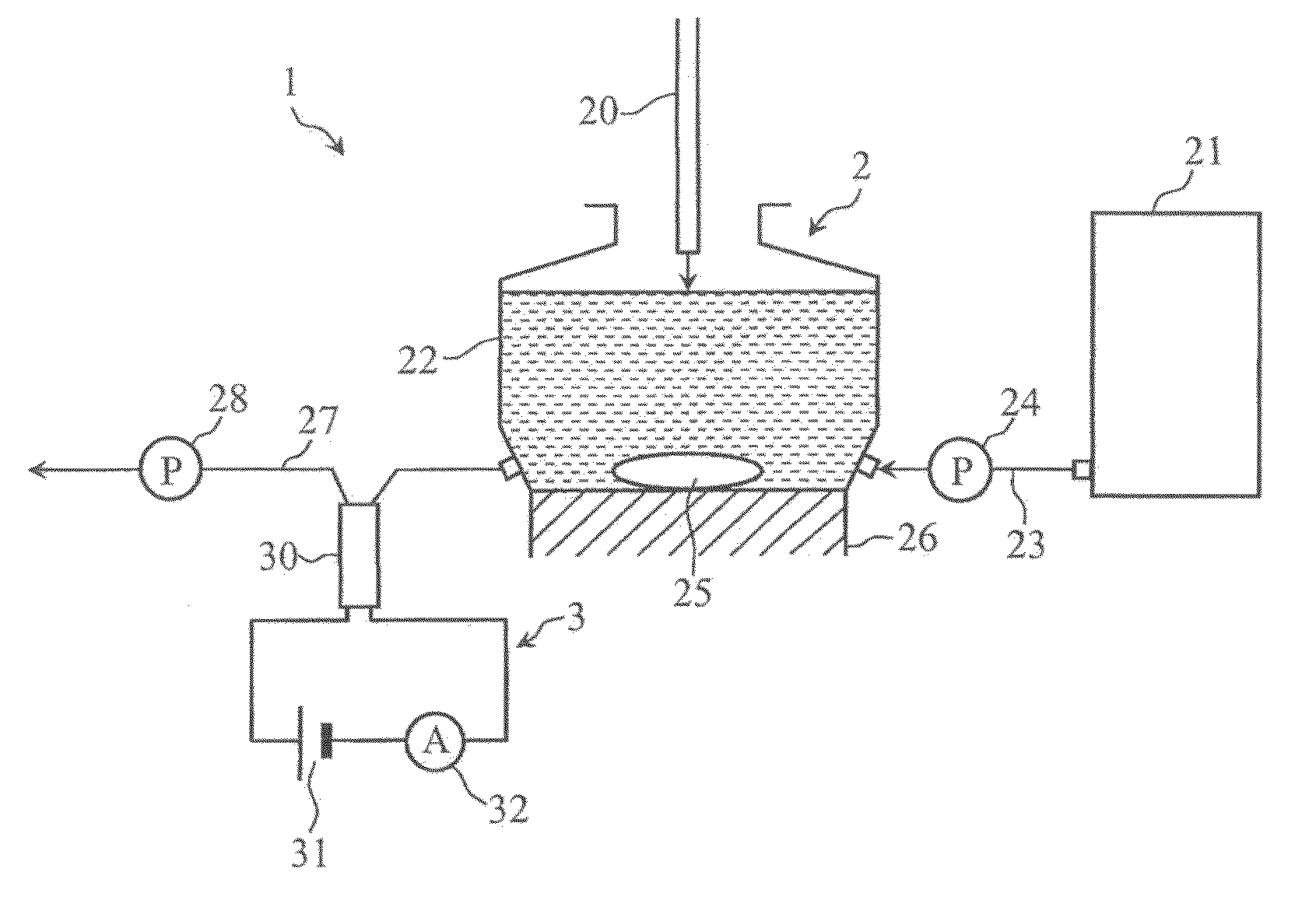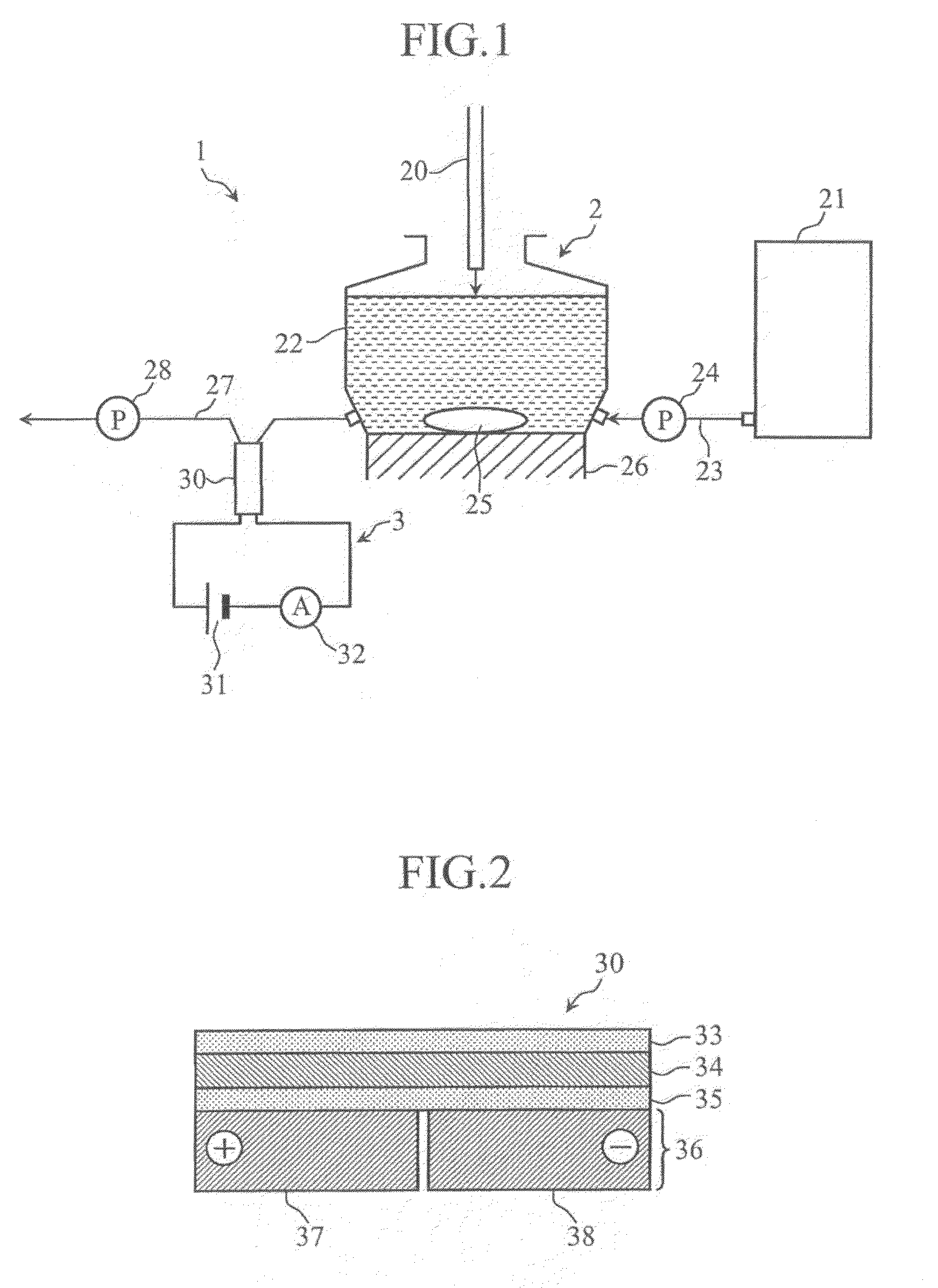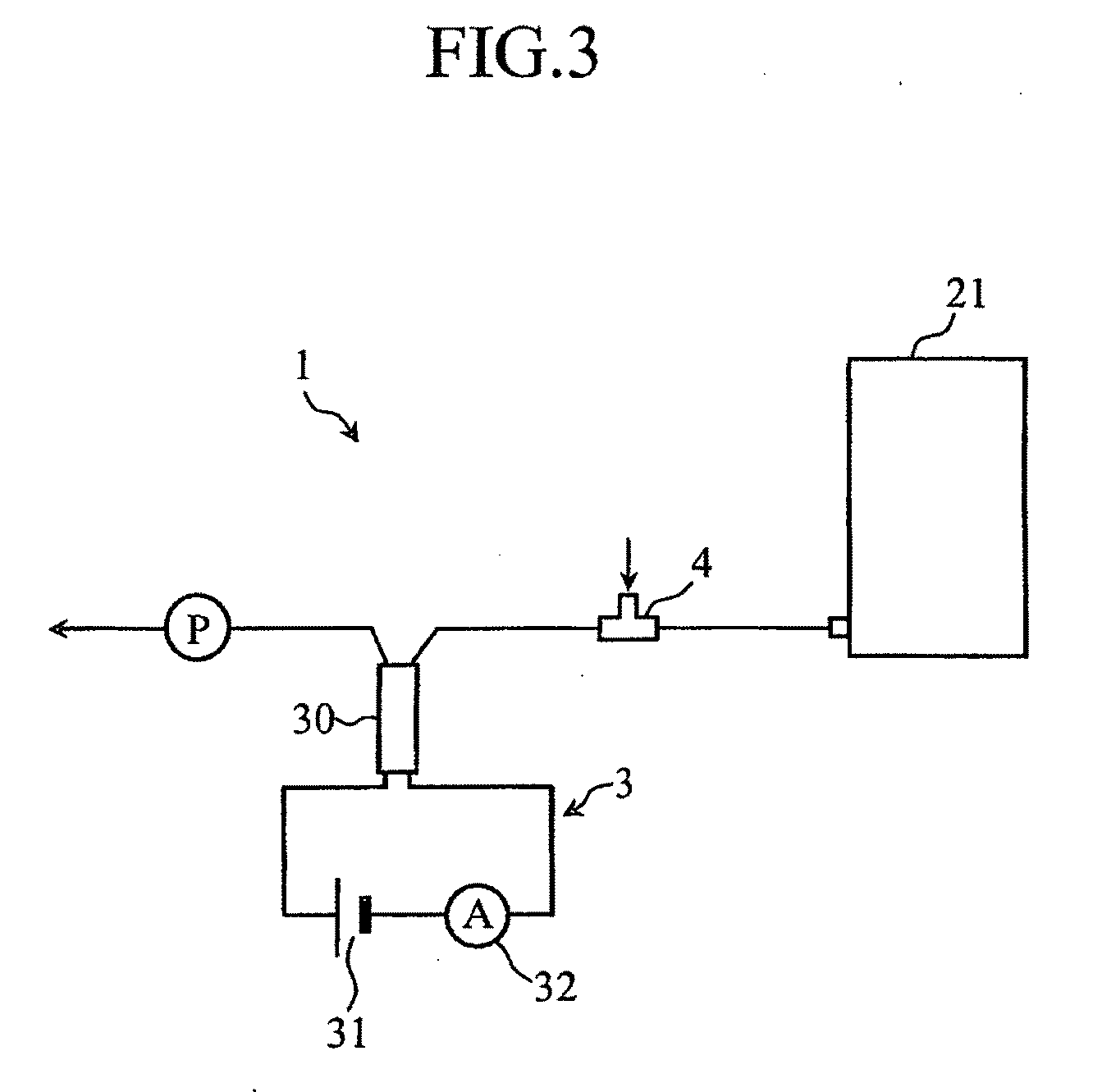Method and apparatus for determining substrate concentration and reagent for determining substrate concentration
a technology of substrate concentration and reagent, which is applied in the direction of liquid/fluent solid measurement, biomass after-treatment, enzymology, etc., can solve the problems of difficult to obtain high determination accuracy and unrealistic approach, and achieve the effect of improving determination accuracy and without any complicated and time-consuming handling steps
- Summary
- Abstract
- Description
- Claims
- Application Information
AI Technical Summary
Benefits of technology
Problems solved by technology
Method used
Image
Examples
example 1
[0048]In this example, the influence of sodium azide onto a response value when a glucose concentration in a specimen is determined by means of a hydrogen peroxide electrode was studied.
[0049](Specimen)
[0050]The whole blood in which the glucose concentration is adjusted to 100 mg / dL was used as the specimen.
[0051](Reagent)
[0052]As a reagent, a sample 1 in which NaCl is added by 0.234 wt % to “61H” (manufactured by ARKRAY, Inc.), and a sample 2 in which NaN3 is further added by 0.02 wt % to the sample 1 were respectively diluted 100 times and then supplied into a reaction tank.
[0053](Measurement of Response Value)
[0054]The response value was measured by ADAMS GLUCOSE GA-117 (manufactured by ARKRAY, Inc.) as an oxidation current obtained in a GOD-immobilized hydrogen peroxide electrode when the specimen and reagent were supplied into the reaction tank. The voltage to be applied to the hydrogen peroxide electrode was set to 650 mV, and a response current was measured at 50-msec interva...
example 2
[0058]In this example, the influences of sodium azide and sodium nitrite onto a response value when a glucose concentration in a specimen is determined by means of a hydrogen peroxide electrode were studied.
[0059](Specimen)
[0060]The whole blood in which the glucose concentration is adjusted to 100 mg / dL was used as the specimen.
[0061](Reagent)
[0062]As a reagent, a sample 3 in which NaCl is added by 0.234 wt % to “61H” (manufactured by ARKRAY, Inc.), a sample 4 in which NaN3 is further added by 0.02 wt % to the sample 3, and a sample 5 in which sodium nitrite is added by 0.02 wt % to the sample 3 were respectively diluted 100 times and then supplied into a reaction tank.
[0063](Measurement of Response Value)
[0064]The response value was measured by ADAMS GLUCOSE GA-117 (manufactured by ARKRAY, Inc.) as an oxidation current obtained in a GOD-immobilized hydrogen peroxide electrode when the specimen and reagent were supplied into the reaction tank. The voltage to be applied to the hydrog...
example 3
[0067]In this example, the influence of NaCl in a reagent onto a response value was studied.
[0068]As the reagent, “61H” (manufactured by ARKRAY, Inc.) was prepared as a sample 6, and a sample 7 in which NaCl was added to the sample 6 by 0.234 wt % were used.
[0069]A physiological saline including NaCl of 0.9 wt % was diluted 100 times with the sample 6 or 7, and the obtained solution was used as the specimen.
[0070]The response value was measured in a manner similar to Example 1. The measurement results of response current values, which were converted into voltage values, were illustrated in the drawings, the sample 6 in FIG. 7, while the sample 4 in FIG. 8.
[0071]As is known from FIGS. 7 and 8, the response value was instable in the sample 6 in which NaCl was not added, while the response value was stable in the sample 7 in which NaCl was added. That is, it is considered that NaCl is likely to stabilize the basis of the response current value.
[0072]Therefore, it is considered that the...
PUM
| Property | Measurement | Unit |
|---|---|---|
| voltage | aaaaa | aaaaa |
| concentration | aaaaa | aaaaa |
| voltage | aaaaa | aaaaa |
Abstract
Description
Claims
Application Information
 Login to View More
Login to View More - R&D
- Intellectual Property
- Life Sciences
- Materials
- Tech Scout
- Unparalleled Data Quality
- Higher Quality Content
- 60% Fewer Hallucinations
Browse by: Latest US Patents, China's latest patents, Technical Efficacy Thesaurus, Application Domain, Technology Topic, Popular Technical Reports.
© 2025 PatSnap. All rights reserved.Legal|Privacy policy|Modern Slavery Act Transparency Statement|Sitemap|About US| Contact US: help@patsnap.com



